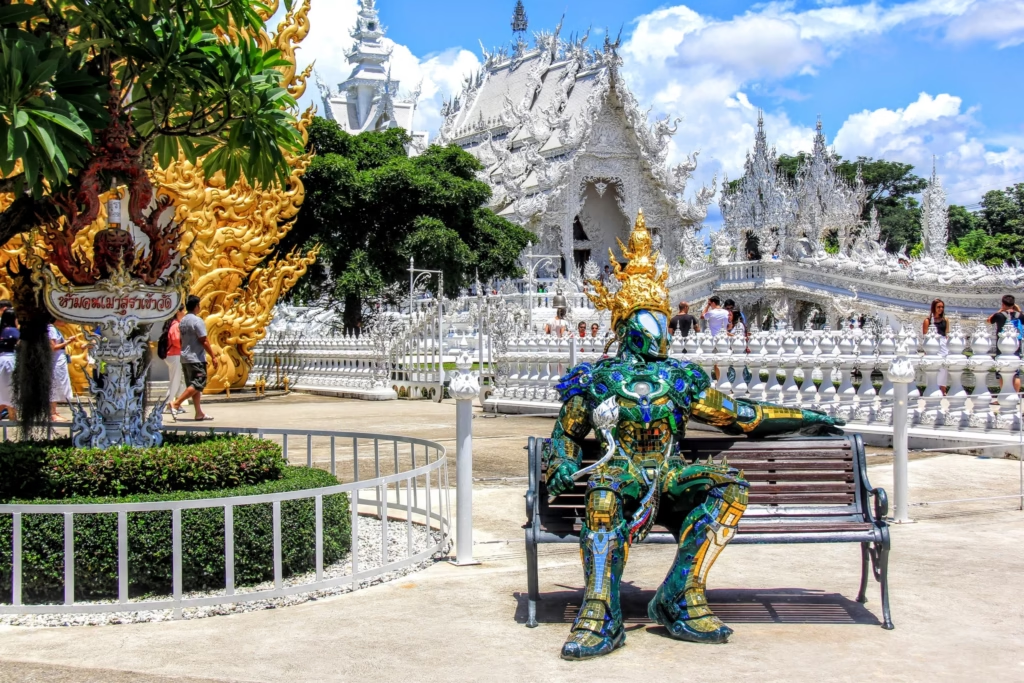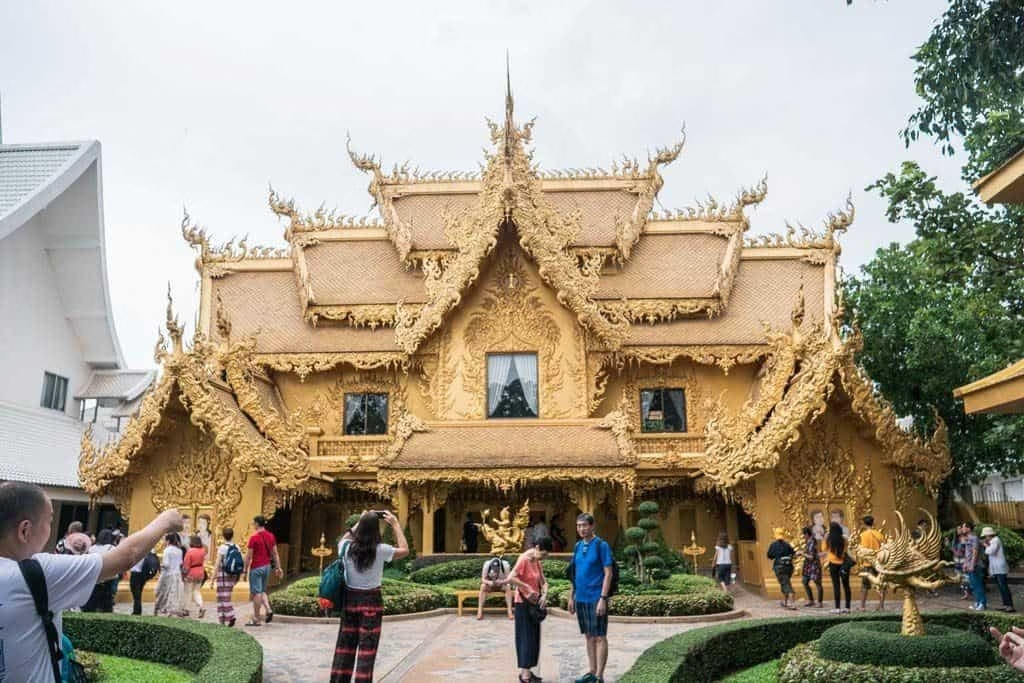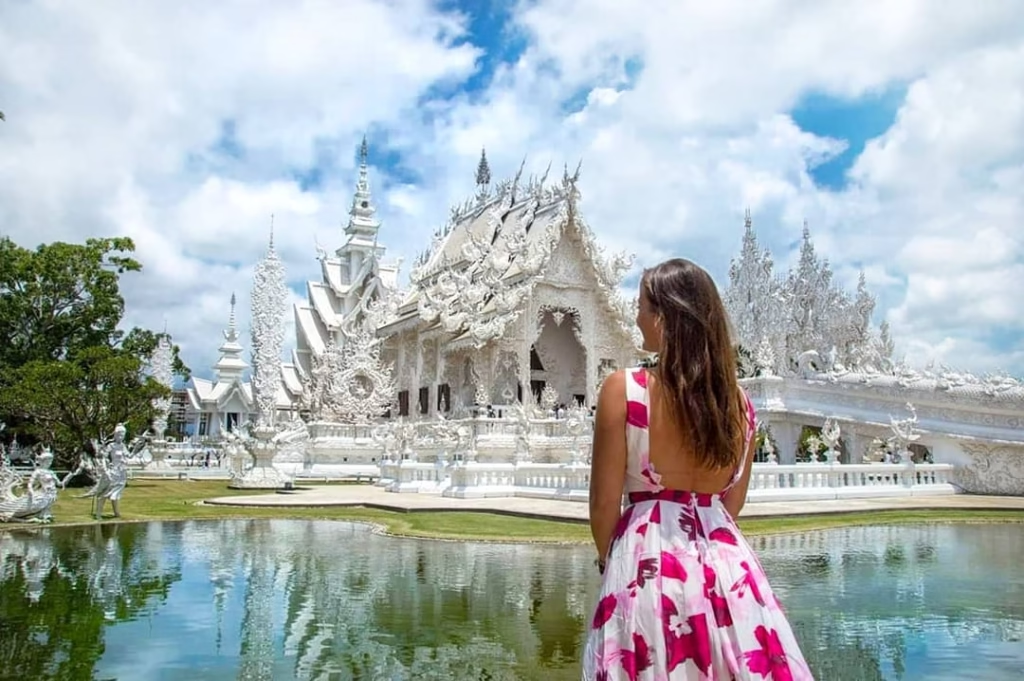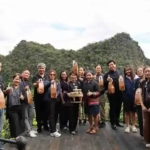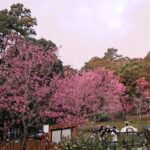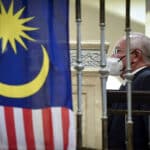CHIANG RAI — National Artist Chalermchai Kositpipat has confirmed a new admission price for foreign visitors to Wat Rong Khun. The fee will rise from 100 to 200 THB per person, starting 1 January 2026. Thai nationals will continue to enter free of charge.
Two added benefits come with the update: free access to the cave exhibition and free sarong loans to support proper dress in sacred areas. Tourism operators view the move as part of a quality-first direction aligned with Chiang Rai’s shift toward higher-value travel.
When the sun catches the white stucco spires and mirrored mosaics, Wat Rong Khun, often called the White Temple, still stuns visitors into a brief silence. Designed by Chalermchai Kositpipat, the site functions as a living museum. It needs ongoing care, skilled maintenance, and orderly visitor management to protect delicate details.
That care sits behind the change in ticket price for foreign guests. The 200 THB rate, effective 1 January 2026, reflects the global stature of the work and the real costs of operating and preserving a complex contemporary temple that continues to be refined and repaired over time.
Why 200 THB is a fair price for Wat Rong Khun
- Global context and value: Wat Rong Khun is a long-running, large-scale art project with international recognition. Compared with major museums and art landmarks in leading cities, the new price remains modest. Chalermchai noted he had planned this step since before COVID-19 and waited for the right timing.
- Ongoing stewardship: The fee helps fund specialist cleaning, restoration, landscape care, and systems that keep guests moving smoothly without putting fragile artwork at risk.
What’s new for visitors
This is not just a price change. It is a clearer experience package for foreign guests, with two added perks:
- Free entry to the cave exhibition, a curated art space within the grounds that has been restricted or fee-based at times.
- Free sarong loans to support dress guidelines for religious areas, reducing ad hoc rentals from nearby shops, and improving consistency at entry.
Thai visitors continue to enter without charge. The temple has followed this approach for years, making contemporary art more accessible to locals and learners across the country.
Expected upsides for the site and the city
- Better site management and safety: Intricate stucco, glass mosaics, pathways, and viewing areas carry high upkeep costs. Higher revenue supports cleaning, repairs, staffing, and guest facilities that keep standards high.
- Higher visit quality: Prices that reflect value tend to attract guests who are truly interested in art and culture. This leads to more mindful behaviour, less strain on resources, and a smoother flow at peak times.
- Local economy boost: Reasonable contributions from foreign visitors circulate through nearby services, guides, transport, cafés, craft shops, and homestays. The approach aligns with Chiang Rai’s quality-first tourism and soft power agenda as recovery continues.
Timeline at a glance
- Past policy: Thai free, foreign visitors 100 THB.
- New policy: Foreign visitor fee set at 200 THB from 1 January 2026, paired with added benefits and clear dress guidance.
- Ongoing practice: Modest attire remains required, shoulders covered, and hemlines over the knee. Free sarong loans are available at entry points.
Pricing as a cultural governance tool
- Price as quality control: Around the world, admission fees signal value and fund preventive conservation. For fragile art, small gains in funding can make a big difference in protection from dust, humidity, and accidental contact.
- Differentiated pricing: Keeping access free for Thai citizens returns art to its community, while international visitors contribute to upkeep in a way that reflects travel budgets and global norms.
- Experience standards and dress code: Offering free sarong loans reduces friction at the gate and keeps respect for the sacred space front and centre. It also supports a better shared experience.
Some online chatter may question whether the higher fee will deter visits. For most cross-border travellers, 200 THB is minor compared with trip costs. The decision hinges more on visit quality and time on site. Clear, early communication and added benefits help tour operators, guides, and ticket platforms update their information in time.
Temple managers still need to track results with data. Watch daily counts, peak-hour crowding, queue times, and feedback from nearby vendors. Direct some ticket revenue into visible upgrades, such as multi-language wayfinding, smart queue systems, clean and plentiful washrooms, shaded rest points, and easy-to-understand art interpretation, including options for visitors with mobility needs.
Chiang Rai has built strong cultural and natural assets, from Wat Rong Khun and Singha Park to Baan Dam Museum and a full calendar of festivals. Adjusting key site pricing to match value and care costs is one piece of a broader strategy. The region can also attract visitors to nearby districts, coffee and tea routes, creative communities, and invest in public transport that links attractions.
Quick tips for foreign visitors
- Budget 200 THB per person for entry from 1 January 2026.
- Thais visit for free; bring a national ID for verification.
- Dress respectfully, shoulders covered, and hemlines over the knee. Free sarong loans are available if needed.
- Plan your time. Early morning and late afternoon offer great light and fewer crowds. If visiting with seniors or kids, allow extra time to explore.
The move to 200 THB is more than a number at the gate. It is a commitment between the creator, caretakers, and guests to look after one of Thailand’s signature living artworks to a high standard.
The fee should flow back into visible care and better experiences, from beauty and learning to quiet moments that honour Lanna culture. Every baht helps keep this modern masterpiece of Chiang Rai in fine shape for years to come.





